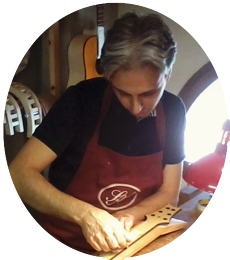
Visit the new website: www.buildyourownguitaronline.com
HOME > Electric guitar wood
ELECTRIC GUITAR WOOD
What are the factors that contribute to making an instrument play in an extraordinary way? Why do apparently identical instruments sound different? After reading this, you will be able to understand how to create the sound of an instrument from scratch and how to get the sound you have in mind.
The content of this article is unique and much more specific than everything you will have read so far (unless, as happens increasingly often, it has been copied), and it is the result of so much studying, so many secrets, 30 years of stringed instrument making and about 400 instruments that I have built.
I ask you, therefore, in making free use of it, to quote the source and the link from which you drew this information (https://www.frudua.com/il-suono-del-legno-nella-chitarra-elettrica.htm)
==========================================================================================================
The sound of an electric instrument is strongly influenced by several factors including mainly the
type of pickup
used, their
placement
along the scale,
the
length of the scale
, and all the other factors you can learn by attending one of my online guitar making classes.
But first and foremost is the wood that supports the vibration of the string, and this can increase or muffle it depending on how it is used.
Wood influences the sound of the electric guitar by acting on two factors:
1) the purity of the string vibration (sustain).
2) the timbre
When designing an instrument, it is therefore necessary to select the woods in such a way that they facilitate the vibration of the string to the maximum without interfering with it, and at the same time it is necessary to match them and work them in such a way as to obtain the timbre that we are looking for.
For this reason, finding (or crafting) an exceptional instrument is extremely complex.
STRING VIBRATION
To simplify, think of the sound in terms of resonance. A string resonates with a certain frequency and any object that vibrates does the same. A neck in turn resonates at a certain frequency, that of the wood or the sum of the woods of which it is composed (see neck through necks).
Each neck (even if taken from the same tree or board), will sound different. This is well known by drumstick manufacturers, who use auditory and even mechanical methods to "tune" the drumsticks, i.e. to make the two sticks of each pair sound as close as possible to tapping.
Strings also produce notes (read frequencies).
Similar frequencies cancel each other out.
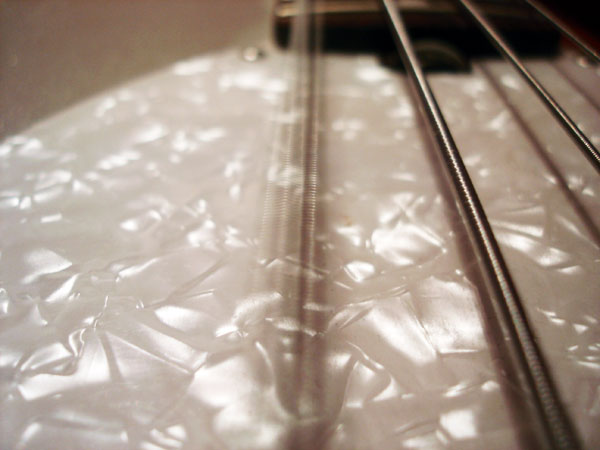
If the resonance of the material with which the instrument is composed interferes with the resonance of the strings, some harmonics will be erased or emphasised and we will have vibration issues on the string: little sustain, "wolf notes" (howling notes), dead notes, etc.
A classic example is the dramatic reduction of sustain that we have in almost all bass "bolt on" on the G string between the 4th and 7th fret.
Try an experiment: being careful not to damage the finish, tighten a 30cm steel carpenter's clamp on the headstock and you will hear the dead notes disappear as if by a miracle. What have you done? You increased the mass of the headstock by moving the resonance peak BEYOND the strings' peak on the neck and the defect has vanished.
For this reason, many valuable instruments have the headstock reinforced with a "volute". The volute reinforces the neck/headstock joint against shocks and stiffens the neck/headstock joint, reducing the vibration of the headstock and eliminating the drop in sustain on some notes.
Among other factors, it follows that for body and neck we will have to choose a wood that resonates (vibrates) in a way "ADJACENT" to the resonance of the strings but without "overshadowing" it.
Like a footballer who dribbles at his opponents, the resonance peak of the wood will be close to the resonance peak of the strings without ever meeting it.
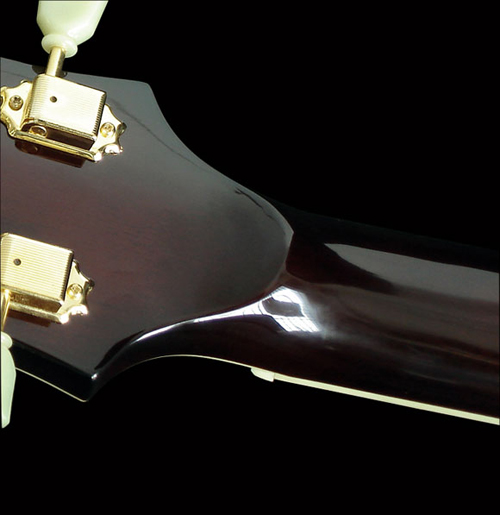
but also to improve the sound by stiffening the headstock
thereby preventing from dampening the sound of the string.
THE TONE
Now we have to "coat" the skeleton with the timbre we have in mind. To do this we can use dozens of woods and pickups. Pickups are of enormous importance in electric instruments. Pickups are responsible for about 70% of the sound of a guitar and 60% of the sound of an electric bass.
Pickups, however, only detect the sound of the vibration of the strings, the purity of which depends entirely on the wood used (the support). That's why wood makes that difference that we feel when we compare the same guitar model and notice that some sound better than others.
Today we will understand why and how to "drive" these differences. The most important wooden part of the electric instrument, whatever sort it is, is the neck. To find out why, read this article.
To clearly understand the influence that wood has on timbre and how we can use it and mix it to recreate the sound we have in mind, we must divide wood into 5 different types:
- Soft, light low-density woods
- Woods of average weight, hardness, and density
- Medium light but hard and medium dense woods
- Heavy and dense hardwoods
- Hard and oily woods
Soft, light low-density woods
This category includes woods such as birch and poplar that should never be used for the construction of the body. Wood like poplar, birch and basswood are very soft and need a hard wood cap in order for tremolo studs to resist the string tension.
These woods are placed beneath the density of the American (basswood) and at tapping are characterized by a medium volume and a slightly deaf sound with a fairly fast decay.
ATTENTION! This does not apply to spruce, a very light still rigid and highly resonant wood.
Woods of average weight, hardness and density
This category includes the most widely used woods in electric guitar body making, such as Alder, swamp ash, lighter mahogany, but also woods excluded from the guitar making tradition, such as beech, cherry and chestnut. When tapping, you can tell them from characteristic sound, good sustain, an "important" volume and a sonority audible on all frequencies.
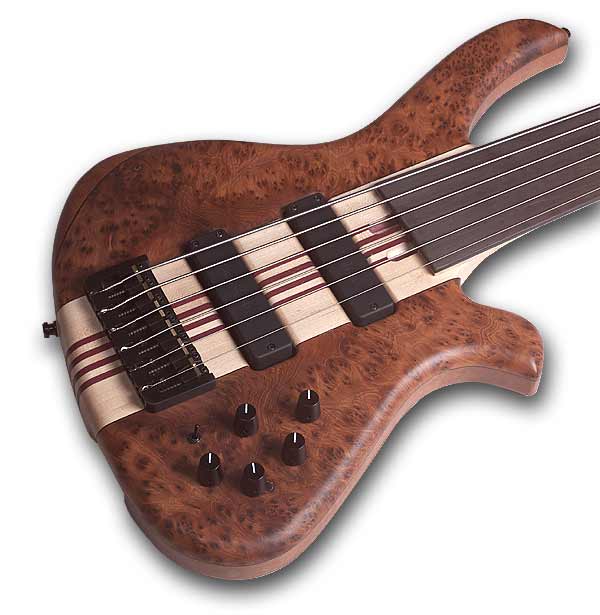
medium support, bass, sustain, and neck definition in 11 sections
of maple and purple heart that guarantees it stability
and the right amount of high end and attack.
Medium-heavy, rigid and relatively dense woods
This group includes highly resonant woods such as maple, excellent for some applications such as the construction of necks, tops and sometimes even bodies, but also cuts including heavier species of mahogany , ash and even walnut, sometimes used for the lamination of the neck through necks.
When tapping, you can distinguish them by the sound characterized by an excellent sustain, an "important" volume and a brighter sound still present on all frequencies.
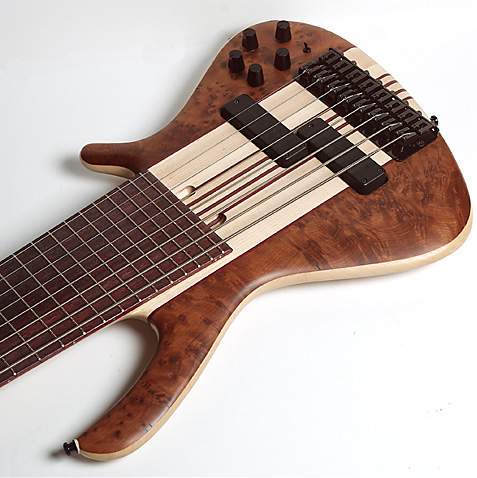
Frudua Octabass 8-string. Combined with the maple and purple heart
neck and ebony fretboard these woods give a sound that is audible
and clear on all frequencies, making for a versatile instrument.
Hard, heavy woods
Part of this family of mainly exotic woods are Ebony, Wenge,
Purple Heart and
Paduak, they mainly used for fretboards and bubinga is also
used for the basses. Tapping wise they offer a bright sound with a long sustain but at quite reduced volume.
The use of these woods is recommended for neck laminations as they increase neck stiffness, and for
top plates and on the neck of through body bass "wings".
Used in a reduced thickness in combination with more "neutral" woods like Mahogany, Alder, or Ash, these hard
woods help to refine and reinforce the sustain and the fundamental note and also provide a sharper attack.
Hard, resinous and oily woods
This family includes some exotic woods whose content of natural oils can vary from a minimum (rosewood, Purple Heart), to a maximum (teak, goncalo alves, Cocobolo, Bocote, Ziricote,
Zebrawood).
These tapping woods offer a sound that varies from bright with good sustain but a relatively low volume (minimally oily) to a sound that is generally slightly deaf (more oily) and they should be used with caution and in limited thicknesses as they muffle the sound. They are normally used for fretboards as they resist wear better than painted maple, for neck through laminations or for aesthetic reasons such as top plates.
A classic example is rosewood, an oily wood that dampens the sound of the maple of the neck and that should be used only to a limited extent and in minimum thicknesses (*), or to DELIBERATELY darken the sound of an instrument that is too bright. These woods help us to understand how treating instruments with essential oils instead of synthetic paints is difficult and harmful to the sound.
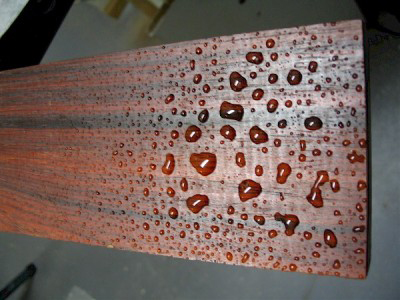
THE IMPORTANCE OF THE TYPE OF NECK WOOD
When designing the timbre, it is first necessary to concentrate on the heart of the instrument: the neck.
In the resonance of the neck there are many factors that have a dramatic impact on the sound:
- The seasoning (water content)
- the thickness and amount of wood
- the type of finish (hard, soft, oily),
- How and where the board was cut off from the shaft
- Where on the neck blank or body blank has been cut,
- What kind of truss rod has been mounted inside the neck and how it's working,
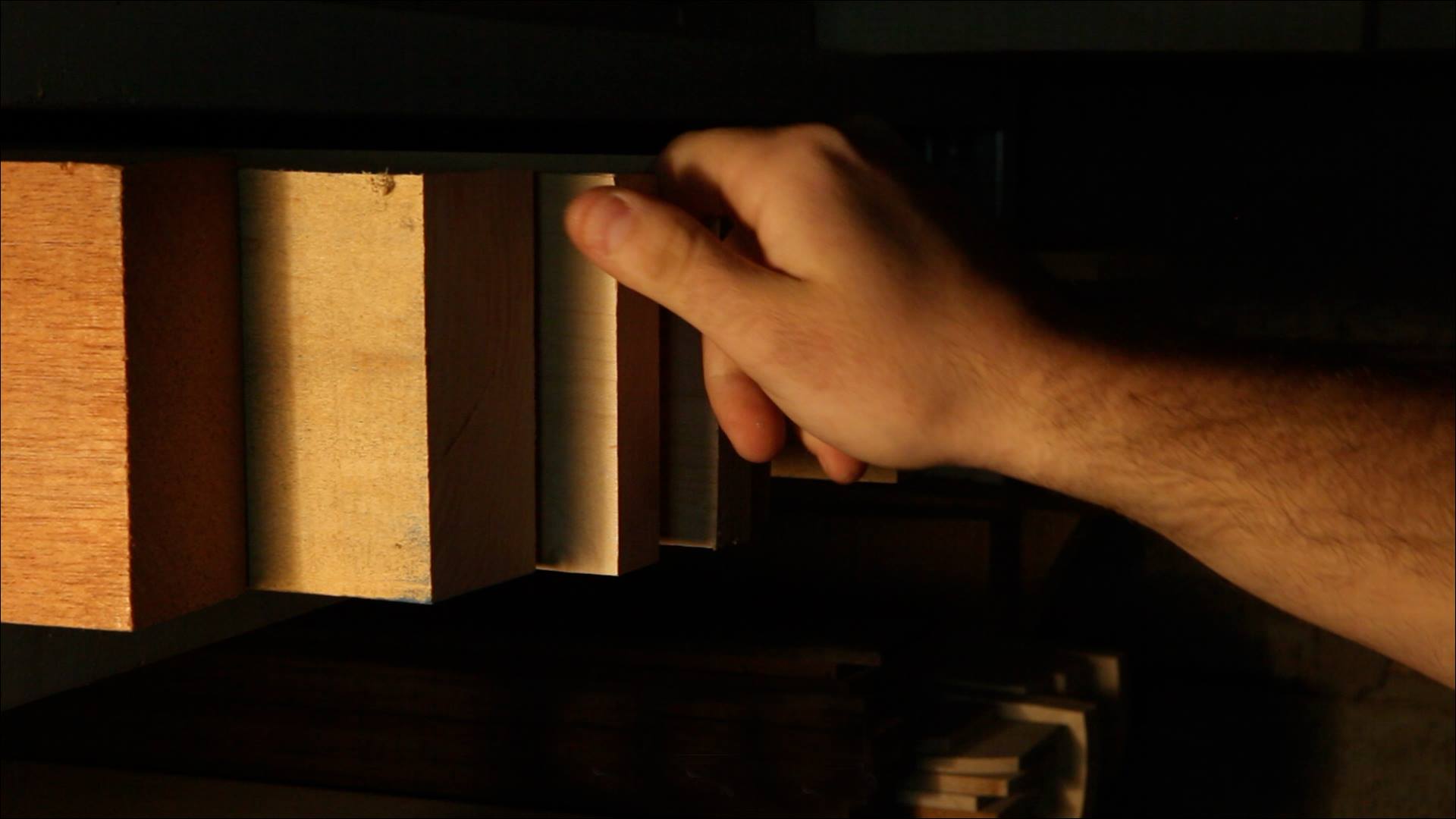
in the construction of the guitar and electric bass.
SEASONING
The water content inside the walls and channels of the cells influences the way the wood resonates.
As a result, a dry wood will resonate better than a wood that is still moist.
THICKNESS
The thickness of the neck greatly influences the overall sound of the instrument. The more resonant and thick the neck the more your instrument will sound good. NB: a resonant but thin neck will always sound better than a thick but dull one (importance of tapping).
FINISHING
A thin and hard finish will protect and let the neck play better than a thick and hard finish and even more than a non-professional oil finish, which impregnates the neck and compromises the resonance.
CUTTING
An inner cut will provide a harder and denser wood (more sustain, less volume, more brilliance and more stability), while an outer cut a less dense and lighter wood (more volume, less sustain, more body and less stability). In the middle represents a good compromise.
TRUSS ROD
Both the type of truss rod (single or double expansion), the material with which it is made, and the way in which it is installed inside the neck, influence its resonance. Usually the more wood you need to remove to insert the truss rod, the less sound will remain in the neck. Some truss rods also consist of two steel bars which, if not well coated with a thermostringent sheath that prevents them from resonating, can further inhibit the neck’s resonance.
IN PRACTICE
Let's cut several wooden blanks and let them seasoning and then apply the Frudua method of tapping to select them according to the principles we have seen.
Below you will find some graphs that represent in a simplified way, the timbre influence of the various types of wood on the sound of the different parts that make up the electric instrument.
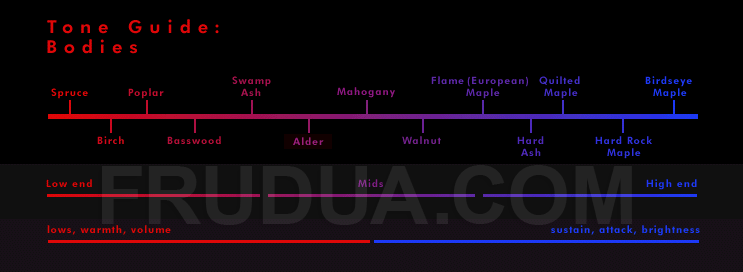


(*) Leo Fender understood this and gradually reduced the Rosewood thickness of the Strat fretboard
til a small layer of about 3mm, this was to avoid the negative effects of Rosewood on tone and necks.

